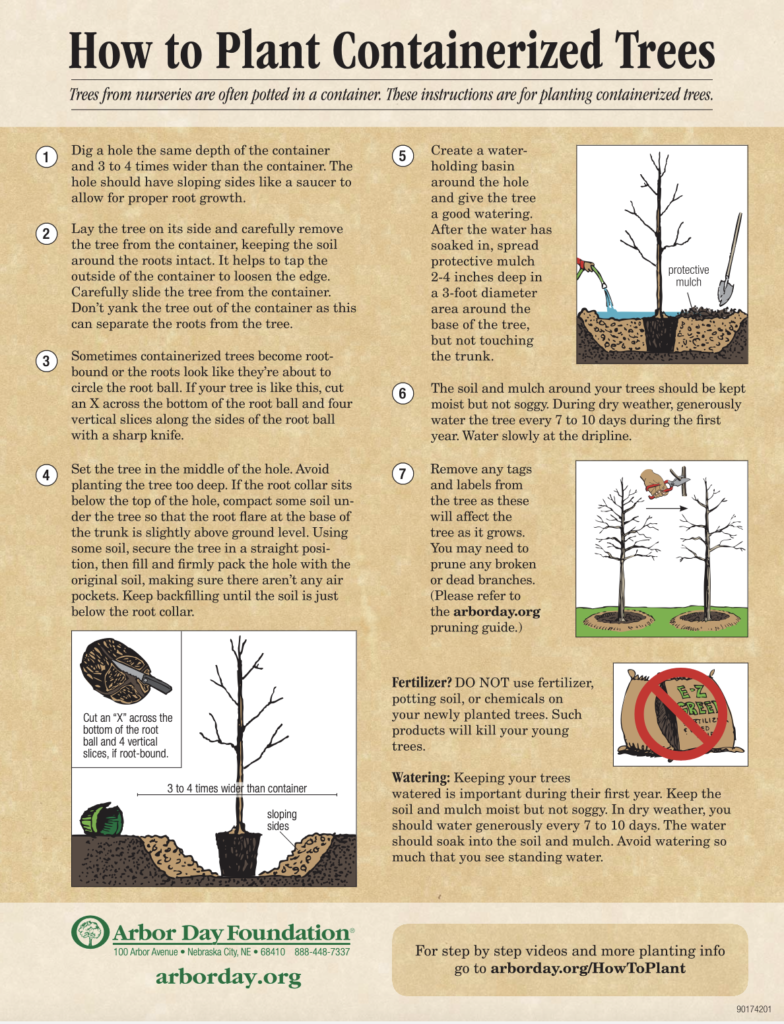Thank you for your donation and receiving a plant from the 2023 Earth Day Everyday Festival Plant Sale. Below is information on how to plant and care for the plant species you have chosen.
FLOWERING DOGWOOD
Cornus florida
Description: Small tree, horizontal branching habit; H: 25′; white flowers April/May, red berries in autumn; good fall color; excellent understory plant; somewhat deer resistant
Requirements: Full sun to part shade; prefers moist soil conditions
Wildlife value: Good for birds and pollinating insects: flowers provide early-season pollen for insects; fruit provides late-season food for birds

AMERICAN HORNBEAM
Carpinus Caroliniana
Description: Medium hardwood shade tree; H: 35′; Dark green summer leaves that turn a variegated orange in the fall.
Requirements: Shade, partial sun; prefers moist soil conditions
Wildlife value: A host plant for the caterpillars of several species of butterflies, including the Eastern Tiger Swallowtail, the Striped hairstreak, and the Red-spotted Purple. Nutlets and buds are an important food for gray squirrels and wild turkeys.

TULIP TREE
Liriodendron tulipifera
Description: Large hardwood full sun tree; H: 130′; Flowers are yellowish-green, with a touch of orange on the outside. The smooth green leaves are broadly lobed and turn vivid golden yellow in fall.
Requirements: Full, partial sun; prefers moist soil conditions
Wildlife value: In the spring, the tulip tree draws pollinators like hummingbirds and bees to the nectar in its flowers, while bobwhites, rabbits, squirrels, and other animals prefer to feed on the seed.

SUGAR MAPLE
Acer saccharum
Description: Large hardwood full sun tree; H: 80′; well-known for the liquid gold that resides inside them: sap and foliage changes to a vibrant orange-red come fall.
Requirements: Full, partial sun; prefers moist soil conditions
Wildlife value: High ecological importance, providing food and shelter for a wide variety of organisms. White-tailed deer, moose, porcupine, squirrels and snowshoe hare commonly eat the bark, twigs, or fruit of the sugar maple. Songbirds, woodpeckers, and cavity nesters use the sugar maple as a home.

How to Plant Containerized Trees

Download pdf
